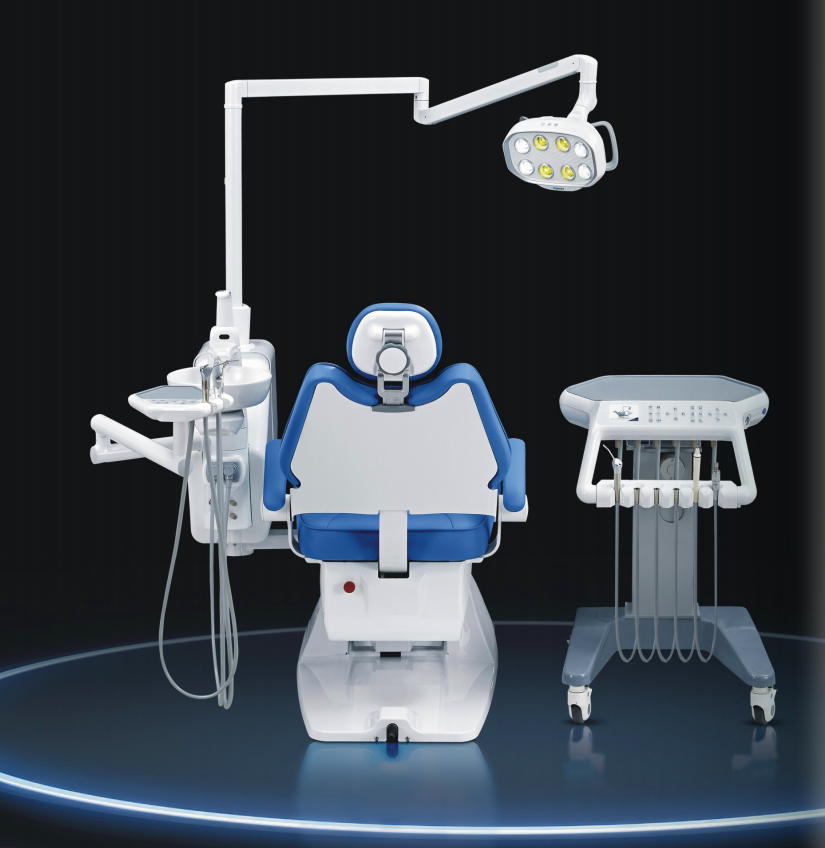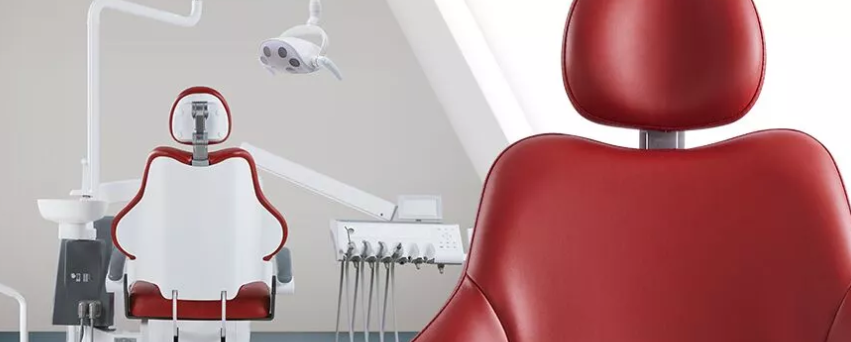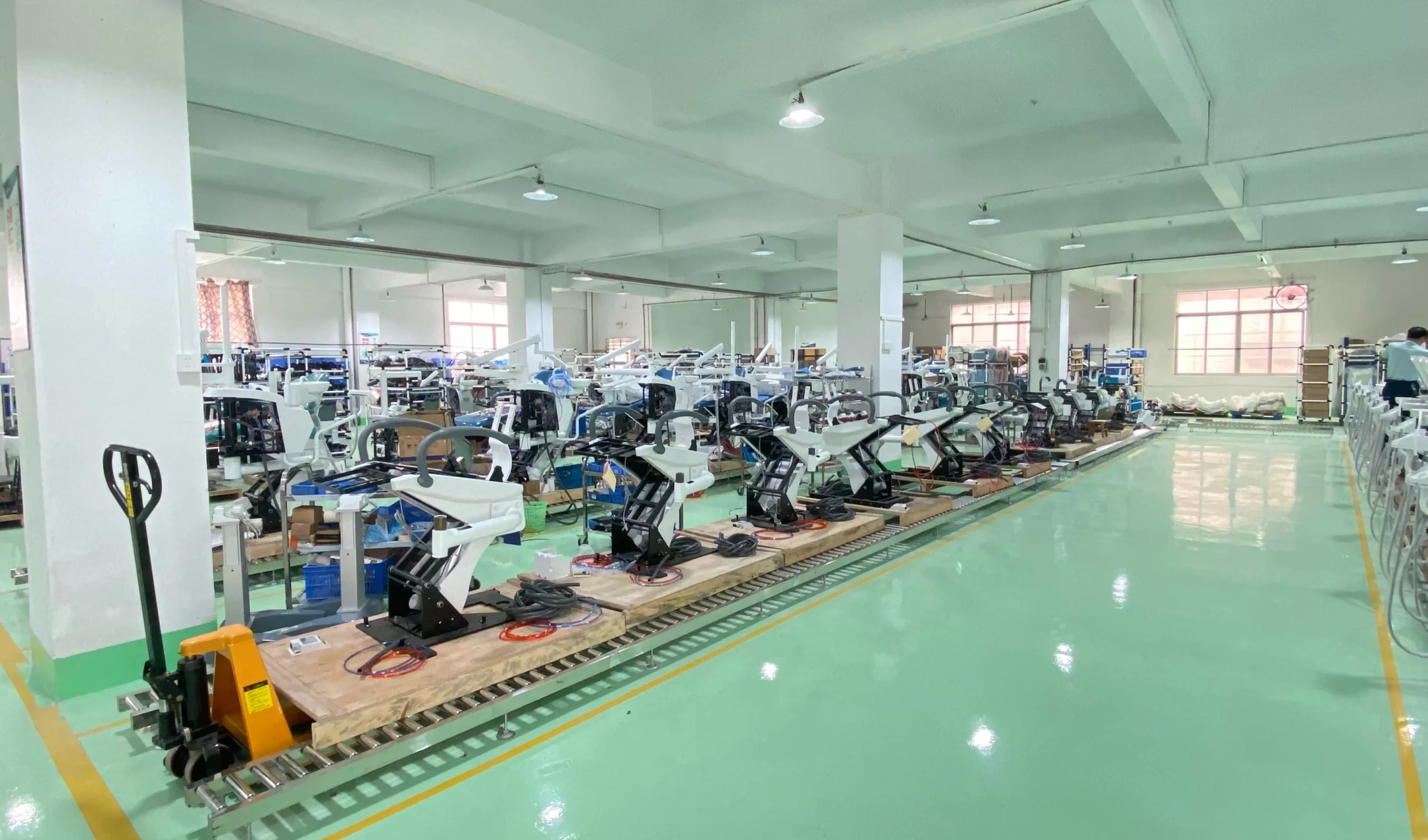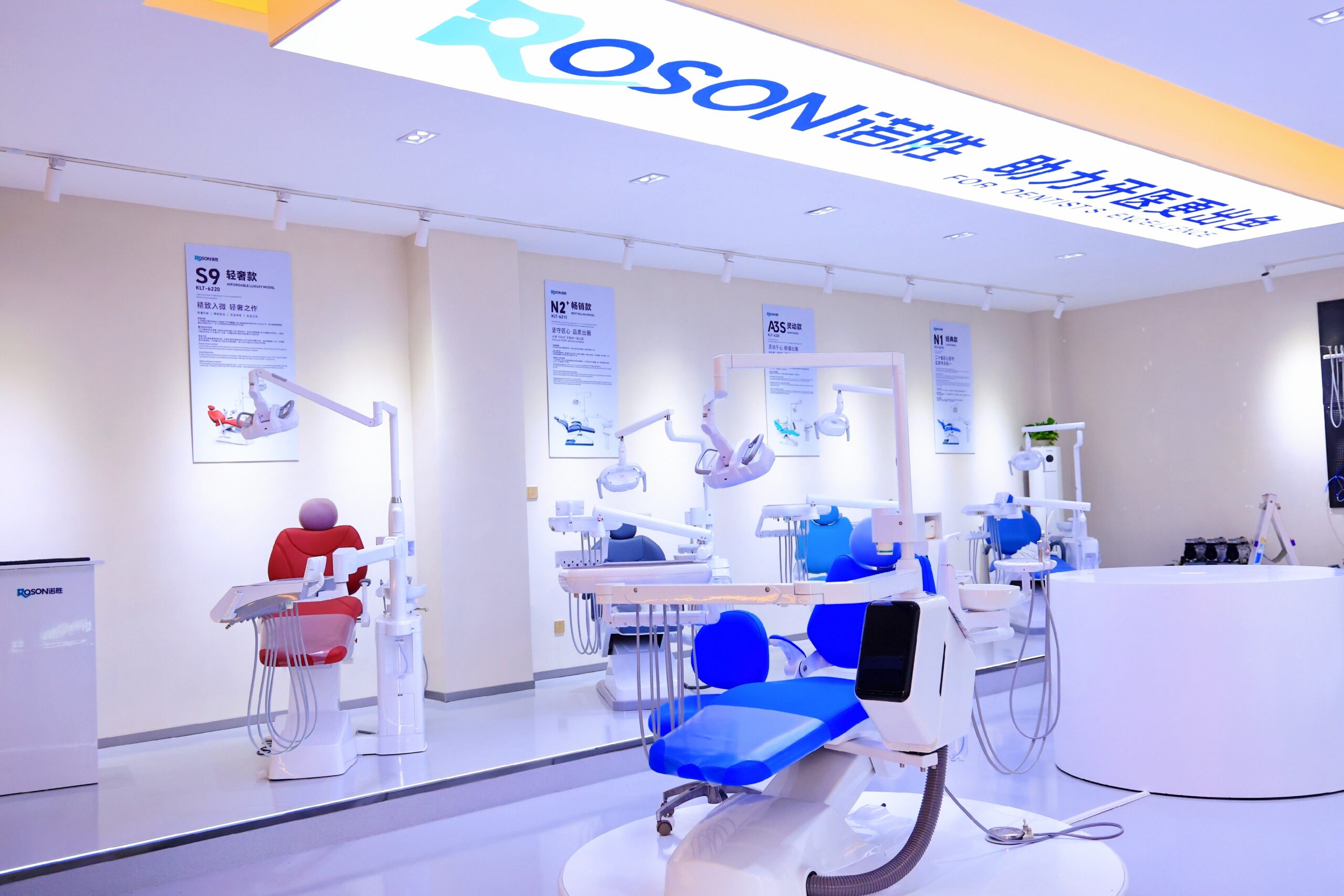They also feature more than a single safety locking mechanism that is far superior to brakes. Some of them include brake mechanisms, position locks, articulating arm locks, and emergency stop functions—all of them in concert, providing patient and dental practitioner safety when conducting procedures. It is much the same as driving a car or truck with no seatbelt—the risk is not justified.
Familiarity with these safety systems is relevant whether purchasing new gear, training staff, or complying with safety requirements. This guide walks you through the required safety lock systems of new dental chairs and maintenance to ensure they operate well.
What Is the Main Master Control of a Dental Operatory?
Each dental chair is dependent on a myriad of related safety mechanisms that inhibit extraneous motion and fix the chair in a chosen location.
Main Brake Systems
The primary braking system prevents the chair from rolling or moving around on the floor. The majority of dental chairs also include foot brakes that engage the wheels when you press a pedal with your foot. More advanced models include built-in brakes that engage automatically whenever the chair reaches a predetermined location. These brakes, similar to bike brakes, engage by wedging in the wheel mechanisms with friction pads to bring the movement to a halt.
Position Lock Controls
Position locks hold the dental chair in fixed angles—such as straight up, laid back, or somewhere in between. Position locks function using hydraulic or electric systems, which you can activate with foot pedals or touchpads. When turned on, they stop the backrest and seat from sliding, even if pressed. Most decent dental chairs remain in position without unintended drift in normal use (meets essential-performance requirements rather than a fixed “±2–3°” tolerance)
Stability Base Locks
The base stability system makes sure the whole chair stays put when the patient moves around or changes positions. Some chairs have these cool expanding stabilizer feet that drop down to the floor when you’re using them, while others have heavy bases with extra locks. This setup is super important for treating nervous patients who might clutch the armrests tightly or move suddenly.
Emergency Stop Systems
There must also be an accessible emergency stop that instantly stops all motorized motion on each dental unit. This button, typically located near the operator or on the base of the chair, interrupts power to all of the motion systems while leaving other functions, such as lights and water, in operation.
These four systems team up to make sure everything’s totally safe when you’re getting dental work done.
What Safety Locks Do Different Dental Chair Positions Require?
Various positions of work necessitate different requirements of safety systems. A dental chair that is stable in the upright position would possibly feel unsteady in the fully reclined position unless proper locks are activated.
Vertical Position Lock Features
When the chair is in the vertical or upright position (about 70–85 degrees, model-dependent), seat-back tilt is the main issue to prevent, as well as seat height adjustments. The position lock only secures the backrest pivot and height adjustment mechanism. Ratchet-style locks that snap into fixed positions are common among most chairs.
Reclined Position Safety Mechanisms
The full recline, normally 0° (horizontal supine; some models also provide head-down Trendelenburg −5° to −15°) from the horizontal, demands the greatest locking force because gravity is an opponent of the system. The backrest lock must handle more than the patient’s weight, as it must also resist pressure when procedures take place. Good dental chairs employ dual-lock systems for angles of recline—a mechanical lock and a hydraulic or pneumatic backup lock.
Trendelenburg Position Lock
The Trendelenburg position, where your head is lower than your feet, is used in some emergency situations. It’s a fairly unstable setup, so you need specialized locks for it. Chairs that can do such tasks usually come with extra safety catches and often need a two-step unlocking process to stop any accidental activation.
Changing Positions Safely During Transition
Transition is when most accidents occur. Good dental chairs also feature soft-start and soft-stop functions that inhibit rapid moves. The chair position locks do not completely disengage during transition—they slowly release in a controlled manner, and if you release the control, they re-engage instantly.
How Do You Check and Verify Dental Chair Safety Locks in Operation?
Maintenance is not an option when you’re discussing safety locks. These mechanisms deteriorate with time, and minute issues turn into giant issues if not addressed.
Step 1: Conducting Daily Pre-Use Safety Checks
Just before you see your first patient of the day, make a rapid safety check. Press the brake pedal and push the chair to roll—it shouldn’t move. Secure the chair in the upright position and push against the backrest—no give. Examine the emergency stop button. This step is a procedure that should take less than two minutes.
Step 2: Performing Daily Maintenance Procedures
Every quarter, make a more detailed inspection. Look under the chair with a flashlight, look around for loose bolts, examine hoses and cables, and inspect for wear on moving parts. Note down what you discover and when you found it.
Step 3: Cleaning and Lubricating Lock Mechanisms
Monthly cleaning prevents buildup, which would interfere with proper operation, from developing. Blow out debris with compressed air, then spray the manufacturer-recommended lubricant on pivot points and sliding parts. Don’t over-lubricate, as more oil drags in more dirt.
Step 4: Conducting Load Testing and Function Verification
Make regular, formal load tests every six months. Arrange the chair in various angles with an occupant in it and make all locks stay in secure positions. Subject the chair to a full range of motions with a load.
Step 5: Replacing Worn or Damaged Components
When you encounter worn parts—worn cables, worn brake pads, loose lock mechanisms—replace them promptly with manufacturer-authorized parts. Keep a limited inventory of common-wear items so you’re not delayed awaiting shipments when one fails.
Frequently Asked Questions
Q1. How Often Should Dental Chair Safety Locks Be Professionally Serviced?
Most manufacturers suggest professional service every 12 months, but high-volume offices should consider semiannual service. Professional service involves load-testing with power equipment, calibration checks, and replacement of worn parts. Some states or insurance contracts mandate yearly certification. Daily checks and minimal monthly maintenance should be performed by your staff between professional visits. Should you notice any changes in the way the locks engage or grip, please contact us immediately.
Q2. What Are Some Signs of a Dental Chair Brake System That Needs Repair?
Several red flags indicate brake problems. If the brake pedal feels different—mushier, harder to press, or not engaging fully—that’s a problem. If you can rock or roll the chair even slightly when the brake is locked, the pads or mechanism are worn. Any grinding, squeaking, or clicking sounds when engaging the brake suggest mechanical issues. If you see fluid leaking from the base in hydraulic systems, that’s critical. Don’t try to make do with a faulty brake system.
Q3. How Would You Respond to a Dental Unit Position Lock Failure While Performing a Procedure?
If a position lock fails during your treatment, stay calm; patient safety is paramount. Strike the emergency stop to prevent further movement. Support the patient’s head or body so that they stay comfortable. If you can safely escort the patient from the chair, manually move it to a safe location. Document precisely what happened. Please mark the chair as out of service and promptly report it to your equipment technician. Never recycle a chair after a lock failure until it’s professionally checked and repaired.
Conclusion: Ensuring Dental Chair Safety Through Proper Maintenance and Testing
Modern dental chairs also include safety lock systems that protect practitioners and patients from harm. Maintenance is not just common sense—it’s a must for weeding out potential problems that could become life-threatening failures. Schedule your professional dental chair test for this week, and make it known among your staff that daily safety checks need to happen. Verify maintenance records and replace worn components. Take a few minutes of your time this week to manually test all of the lock mechanisms in all of your chairs.












